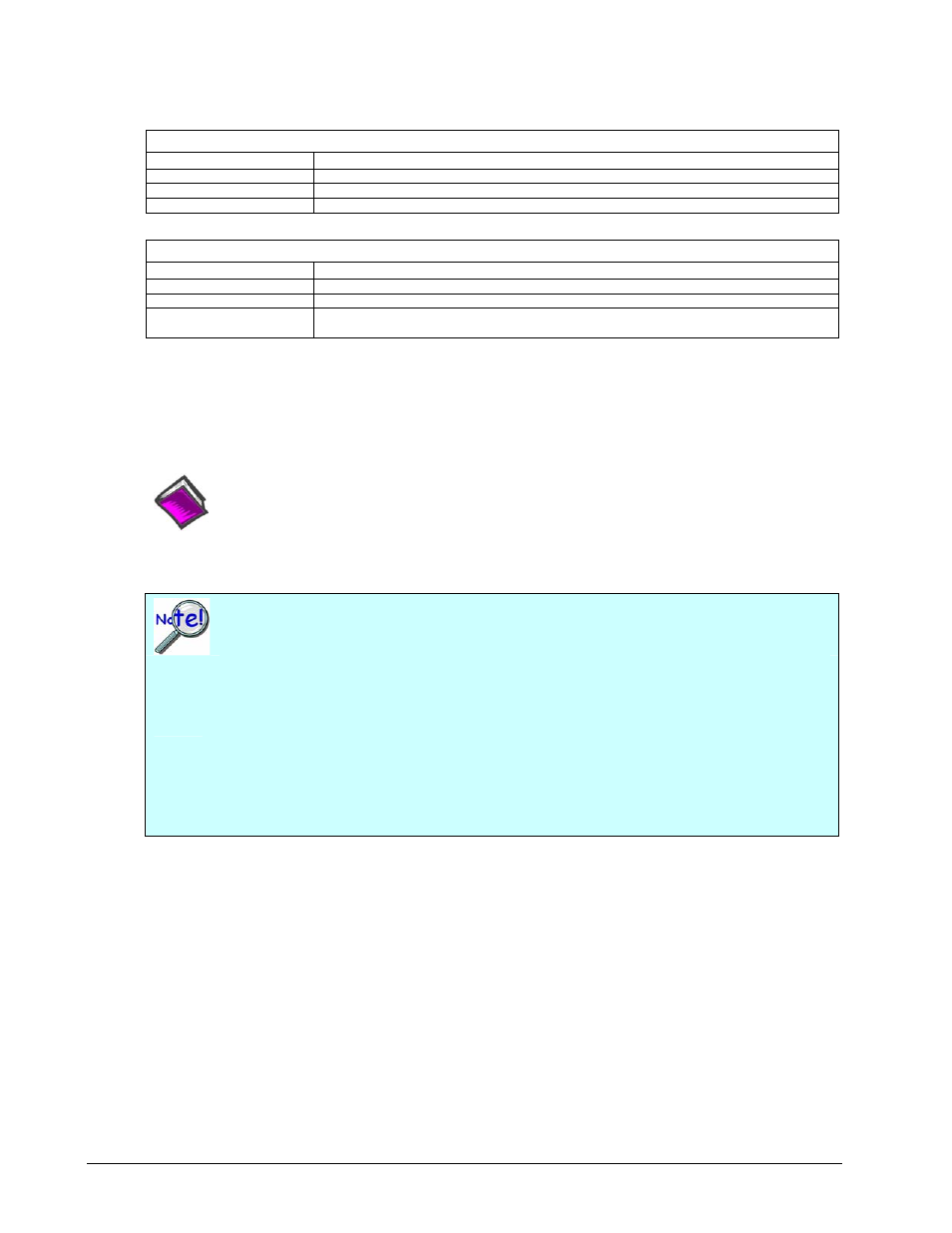Parameter type definitions rtdtype, Returns, Function usage – Measurement Computing Data Acquisition Systems rev.10.4 User Manual
Page 168

Parameter Type Definitions
RtdType-(
RtdType)
Definition
Description
Dbk9RtdType100
Value for a 100 ohm RTD
Dbk9RtdType500
Value for a 500 ohm RTD
Dbk9RtdType1K
Value for a 1000 ohm RTD
Avg
Definition
Description
avg = 0
Specifies block averaging--all scans are averaged together to compute a single value for each channel
avg = 1
Specifies no averaging--each scan’s readings are converted into measured signals
avg
≥ 2
Specifies moving average--each scan’s readings are averaged with the avg-1 preceding scans’
readings before conversion.
Returns
DerrRtdParam
Setup
parameter
out-of-range
DerrRtdTArraySize
Temperature storage array not large enough
DerrRtdValue
Invalid RTD type
DerrNoError
No error
For more details on error messages refer to the Daq Error Table.
Function Usage
For all functions of the form daqCvt..., raw data to be converted must be unsigned
(i.e., the dafUnsigned value must be set using the daqAdcSetScan function).
For T/C and RTD conversion, users of Daq/2000 Series devices* and/or Daq PC Cards must
be sure that the main unit is using ten volt range gains settings, either unipolar (0 V to 10 V)
or bipolar (-5 V to +5 V).
See the “T/C Gains Settings” section in the daqCvtTCConvert function entry for the
appropriate settings.
* Daq/2000 Series devices include DaqBook/2000 Series, DaqScan/2000 Series, DaqLab/2000
Series, and DaqBoard/2000 Series devices.
The daqCvtRtdSetupConvert combines the operations of the both the daqCvtRtdConvert function
and the daqCvtRtdSetup function. For more detailed information on using RTDs refer to the entry for the
daqCvtRtdConvert
function.
Moving Averages
To better illustrate the moving average feature of the avg parameter, suppose the avg value is set to 3. Since
each scan’s readings are averaged with the preceding scan, the results from the first scan (which has no
preceding scan) are not averaged at all. However, the results from the second scan are averaged with the first
scan, and the results from the third scan are averaged with the preceding two scans. After the third scan, each
subsequent scan is averaged with the preceding two scans (since the avg value is 3, and avg-1 is two). In
another instance, if the avg value is set to 5, then each scan after the fifth scan would be averaged with the
four preceding it.
4.3-42 Daq API Command Reference
908494
Programmer’s
Manual
